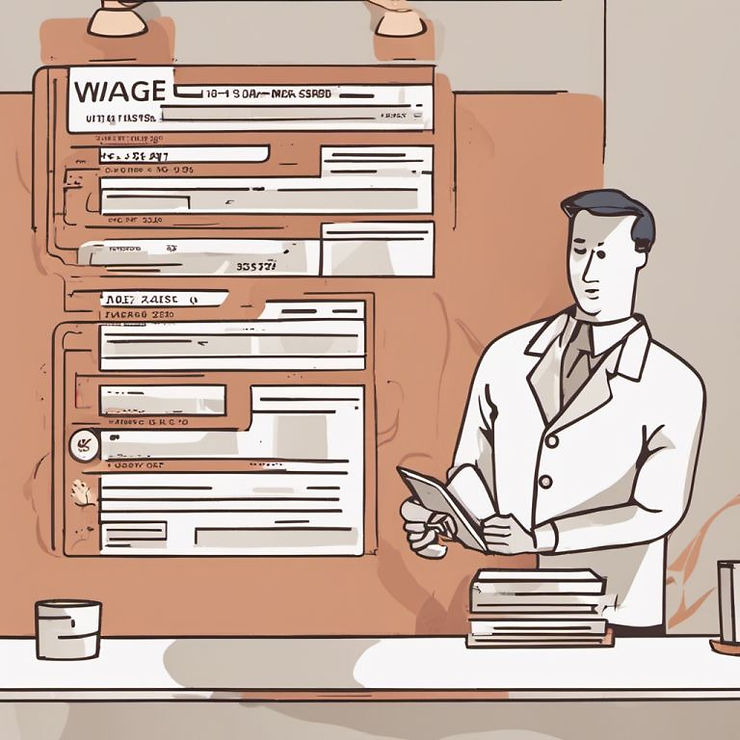Salaries and wages expense is one of the most common and significant expenses for businesses. It refers to the cost of compensating employees and contractors for their work during a specific period.
In this blog post, you’ll learn:
- What is the difference between salaries and wages expense
- How to account for salaries and wages expense on the income statement
- How to optimize salaries and wages expense for tax purposes
- How to manage salaries and wages expense effectively
What is the difference between salaries and wages expense?
Salaries and wages expense are both forms of employee compensation, but they have some key differences. Salaries are fixed payments that are agreed upon in advance and do not depend on the hours worked or the output produced. Wages are variable payments that are based on the hours worked, the units produced, or the completion of a contract.
For example, a manager may earn a salary of $5,000 per month, regardless of how many hours he or she works. A factory worker may earn a wage of $15 per hour, depending on how many hours he or she works. A freelance writer may earn a contract wage of $500 per article, depending on how many articles he or she completes.
How to account for salaries and wages expense on the income statement
Salaries and wages expense are part of the operating expenses on the income statement. They are reported in the period in which they are incurred, not when they are paid. This means that they follow the accrual basis of accounting, which matches the expenses with the revenues they help generate.
For example, if a company pays its employees biweekly, it may have to accrue salaries and wages expense at the end of the month for the work done in the last week of the month. This ensures that the income statement reflects the true cost of running the business in that month.
To record salaries and wages expense, the company debits the salaries and wages expense account and credits the salaries and wages payable account. When the company pays its employees, it debits the salaries and wages payable account and credits the cash account.
How to optimize salaries and wages expense for tax purposes
Salaries and wages expense are deductible for tax purposes, which means that they reduce the taxable income and the tax liability of the business. However, not all types of salaries and wages expense are treated the same by the tax authorities. Some types of salaries and wages expense may be subject to payroll taxes, such as social security, Medicare, and unemployment taxes. These taxes are paid by both the employer and the employee, and they increase the cost of labor for the business.
To optimize salaries and wages expense for tax purposes, the business may consider the following strategies:
- Offering non-cash benefits, such as health insurance, retirement plans, and stock options, instead of cash compensation. These benefits are usually exempt from payroll taxes and may also be valued by the employees more than cash.
- Hiring independent contractors, instead of employees, for certain tasks or projects. Independent contractors are responsible for paying their own taxes and are not subject to payroll taxes. However, the business must ensure that the contractors meet the criteria set by the IRS to avoid misclassification and penalties.
- Taking advantage of tax credits and incentives, such as the Work Opportunity Tax Credit, the Employee Retention Credit, and the Research and Development Credit. These credits and incentives can reduce the tax burden of the business and encourage hiring and innovation.
How to manage salaries and wages expense effectively
Salaries and wages expense are not only a cost, but also an investment in the human capital of the business. They can affect the motivation, productivity, and retention of the employees, which in turn can impact the performance and profitability of the business. Therefore, the business should manage salaries and wages expense effectively by:
- Conducting market research and benchmarking to determine the competitive and fair compensation levels for different positions and skills.
- Establishing clear and consistent policies and procedures for setting, reviewing, and adjusting salaries and wages, based on factors such as performance, seniority, and market conditions.
- Communicating the compensation structure and expectations to the employees and providing regular feedback and recognition for their work.
- Analyzing the return on investment of salaries and wages expense and making adjustments as needed to optimize the cost-benefit ratio.
Conclusion to Salaries and Wages Expense
Salaries and wages expense are a major component of the operating expenses of a business. They represent the cost of compensating employees and contractors for their work. They are accounted for on the income statement using the accrual basis of accounting. They are deductible for tax purposes, but may also be subject to payroll taxes. They can affect the motivation, productivity, and retention of the employees, and thus the performance and profitability of the business. Therefore, the business should manage salaries and wages expense effectively by finding the optimal balance between cost and benefit.



